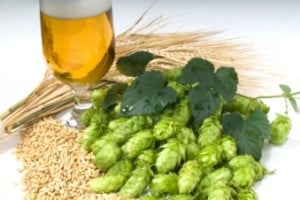 Designing a recipe from scratch can be a challenge for new brewers or those who are transitioning from brewing with kits to making their own beer recipes. I’ve written before about my approach to designing recipes, but this week I thought I would explain the critical “dials” brewers use when building a new recipe.
Designing a recipe from scratch can be a challenge for new brewers or those who are transitioning from brewing with kits to making their own beer recipes. I’ve written before about my approach to designing recipes, but this week I thought I would explain the critical “dials” brewers use when building a new recipe.
First, I will state that I usually start my beer design by referring to a beer style guide, like the one from the Beer Judge Certification Program. The style guide provides a great starting point for most beer recipes, by listing ranges for the key parameters below as well as providing key ingredients and taste guidelines.
Original Gravity
Original gravity (called OG) is simply a measure of how much fermentables are in the wort before you ferment it. Most home brewers use the unit-less specific gravity number which is a measure of gravity relative to water. Pure water would have a specific gravity of 1.000, and most beers have an original gravity in the 1.030 to 1.070 range. Professional brewers also use degrees plato, which is equivalent but measured on a different scale.
Original gravity can be estimated from the grain bill, volume and brewhouse efficiency using software like BeerSmith. The original gravity drives both the alcohol content and body of the finished beer. Beers with a low original gravity will typically have less alcohol and body than those with a high gravity. For a new recipe, I will usually add enough grains or extract to hit the middle of the OG range for a given beer style, and then adjust from there.
Color
The color of your finished beer can be estimated as well using software or the Morey equation. The color of your beer is a function of the color and ratio of the malts used, as well as the volume of beer. Color is also included in most style guides, so again you can adjust your grain bill to achieve the target color for your beer.
When adjusting color I try to be very selective about which grains I use. A lot of beginning brewers use dark caramel malts to adjust color, but more experienced brewers use these malts only sparingly as they can add harsh flavors. In general I prefer to use small amounts of darker malts to achieve my desired color without significantly throwing off the flavor, unless dark malts are a significant part of the flavor profile.
Bitterness and the Bitterness Ratio
Like OG and color, you can estimate the bitterness of a given recipe in advance using BeerSmith or a spreadsheet. Bitterness is measured in International Bitterness Units or IBUs. Also the style guide provides an IBU range that can help you determine that you are in the ballpark with respect to bitterness for a given style. Again I’ll often start with my bitterness in the middle of the target range.
However, in addition to bitterness you need to consider the overall malt to hop balance which is measured using the bitterness ratio. The bitterness ratio is simply the ratio of bitterness to gravity units (from the OG). Bitter beers have a high bitterness ratio, usually 1.0 or more, and moderate balanced beers have a ratio of 0.5 or so. Lightly hopped beers have a ratio below 0.5.
Attenuation and Alcohol by Volume
Most beer drinkers are familiar with the percent alcohol or alcohol by volume (ABV) measurement – simply how much of the beer is alcohol. It is typically between 3-8% for most beers. It can be calculated directly from an original gravity and final gravity reading. Again, most style guides provide a range of ABV values for the typical beer.
Two beer design decisions drive the ABV of the finished beer. First is the original gravity of the beer. Beers with a higher OG will generally result in a higher ABV since they contain more fermentable sugars than light beers. Also beers that contain a large portion of highly fermentable ingredients like sugars and pale malt instead of less fermentable specialty malts will finish with a higher alcohol content.
Second is the yeast and fermentation schedule used. Some yeasts are more effective at consuming sugars, and will result in more alcohol. We call these yeasts “high attenuation”, as they attenuate the beer more than other yeast strains. You can find the expected attenuation ranges for a given yeast by referring to the yeast specs from the yeast supplier.
Key Ingredients
Finally I like to browse the beer style guide as well as existing recipes from sites like BeerSmithRecipes.com to determine what the characteristic ingredients are for a given beer style. Many beer styles derive their flavor from a key ingredient. For example it is difficult to create an Irish Stout without roasted barley, and almost impossible to make a good Weizen without the Bavarian wheat yeast that gives it the characteristic banana and clove flavor.
Those are some quick tips on designing your own beer recipes. Thanks for joining me on the BeerSmith Home Brewing Blog. Be sure to sign up for my newsletter or my podcast (also on itunes…and youtube…and streaming radio station) for more great tips on homebrewing. Also check out the How to Brew Video series I shot with John Palmer if you want to learn more about all grain brewing.